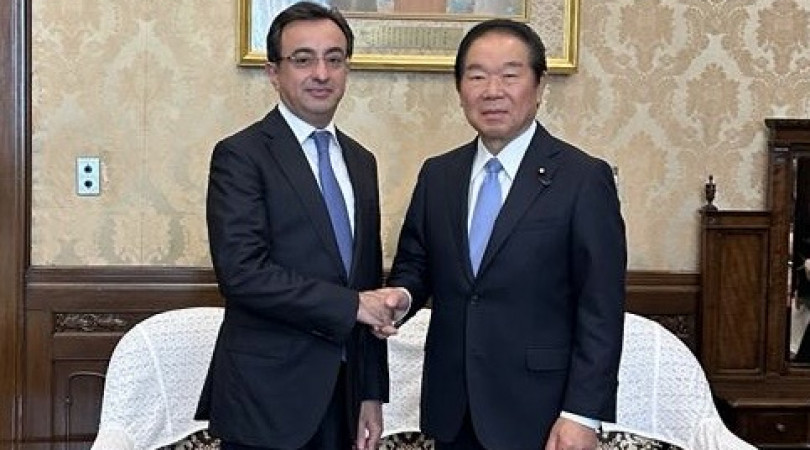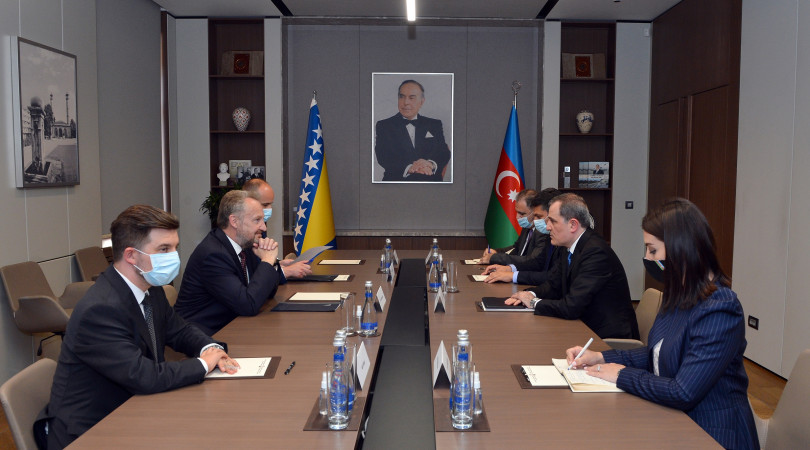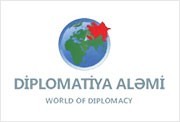Armenian vandalism against historical and religious monuments of Azerbaijan
"The historical and religious monuments, holy sites and temples are also among the victims of the Armenian aggression against the Azerbaijani people, which has been going on for more than two centuries. Our historical and religious monuments are sacred places that embody the national identity, spiritual and moral values and traditions of our people, and preserve people's spiritual memory. Therefore, the destruction of material and cultural artifacts, including historical and religious monuments in the occupied territories of Azerbaijan, is one of the components of the aggressive policy pursued by Armenia," Deputy Executive Secretary of the New Azerbaijan Party, Chairman of the State Committee for Work with Religious Organizations Mubariz Gurbanli said in his article headlined "Armenian vandalism against historical religious monuments of Azerbaijan."
"According to the "List of immovable historical and cultural monuments of world importance", "List of immovable historical and cultural monuments of national importance" and "List of immovable historical and cultural monuments of local importance" approved pursuant to Resolution of the Cabinet of Ministers of the Republic of Azerbaijan of August 2, 2001, the total number of state-registered historical and cultural monuments in the occupied territories is more than 900.
There are 403 historical and religious monuments in the occupied territories, including 67 mosques, 144 churches and 192 sanctuaries. There are more than 900 cemeteries," Mubariz Gurbanli noted.
"It is a well-known that as a result of Armenia's occupation policy, centuries-old ancient historical and religious monuments of the Azerbaijani people have been destroyed, and some of them have been falsified and Armenianized. The main goal of the aggressor country in committing such acts of vandalism is to wipe out both our historical past and spiritual memory on the lands we have lived for millennia.
Armenia carries out its policy of aggression against historical and religious monuments of the Azerbaijani people in various directions. Thus, monuments reflecting our national identity and religious traditions were completely destroyed and attempts to Armenianize, misappropriate and change them have been made.
The monuments of Muslim religious identity in the occupied territories, as well as other cultural artifacts are being destroyed and insulted. In recent years, the fact of keeping cattle and other animals in mosques has been filmed by photojournalists from Western countries, and the whole world community has become acquainted with these photos. Moreover, temples of the Caucasian Albania were Armenianized and Gregorianized.
"Yuxari (Upper) and Ashagi (Lower) Govhar Agha mosques (Shusha), Saatli mosque (Shusha) and Juma mosque in Aghdam were destroyed, while Aghoghlan (Lachin district), Khudavang (Kalbajar district), Ganjasar temples (Aghdara) and others located in the occupied Nagorno-Karabakh region and seven adjacent districts of Azerbaijan were Armenianized and Gregorianized. Sometimes Armenians claim that the mosques located in the occupied territories belong not to the Azerbaijani people, but to other states and implement their insidious efforts with this intention," the chairman said.
"Ancient Azerbaijani religious relics within Armenian territories have also suffered from such vandal actions of Armenians. Armenians have completely destroyed Shah Abbas mosque, Damirbulag mosque, Haji Novruz Ali mosque, Sardar mosque, Bughakar shrine, Aghadada shrines and other holy sites, while they changed architectural features of "Goy" mosque and claimed that it is an Iranian historical monument.
Armenian aggression against Azerbaijani religious monuments is continuing even today. During April battles in 2016, as a result of provocations of Armenian armed forces, 19th century historical and religious monuments, including mosques were seriously damaged by the Armenian vandals along with other places in Aghdam and Tartar regions.
Aggressor Armenia continues to seriously harm historical and religious monuments. Armenian armed forces, who experience failures on the battlefield, set fire to historical monuments, cemeteries, shrines as well as residential buildings. As a result of Armenia's artillery and missile attacks to Ganja, Barda, Goranboy, Aghjabadi, Tartar, Aghdam, Fuzuli, Beylagan districts, a number of historical and religious monuments were seriously damaged.
On September 27, using various heavy artillery Armenian armed forces shelled Azerbaijani residential buildings. Sheikh Babi tomb in Babi village of Fuzuli district saw a substantial damage, and shells of the enemy landed in the vicinity of the shrine of Prophet Jarjis in Beylagan district," Mubariz Gubranli emphasized.
"Armenia should be held accountable for acts of crimes against humanity and property, as well as for the destruction of cultural heritage. The destruction of monuments of Azerbaijani people by Armenia is completely contrary to international documents such as Hauge Convention for the Protection of Cultural Property in the Event of Armed Conflict 1954, European Convention on the Protection of the Archaeological Heritage 1992, UNESCO World Heritage Convention 1972. These actions by Armenia aimed at destroying and falsifying cultural heritage of the Azerbaijani people, which are considered a crime against humanity by international documents, also constitute aggression against the whole civilization," he concluded.




















